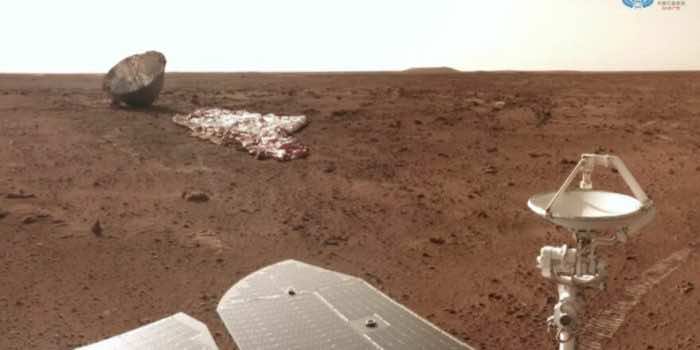China’s Mars sample return mission seeks to collect samples from the Red Planet and return them to Earth in 2031, two years before a joint NASA-ESA mission, according to SpaceNews.
Sun Zezhou, the principal designer of the Tianwen-1 Mars orbiter and rover mission, presented a new mission profile for China’s Mars sample return on June 20, outlining plans for a two-launch scenario, lifting off in late 2028 and returning samples to Earth in July 2031.
Compared to the collaborative NASA-ESA project, China’s Tianwen-3 multi-launch mission will have a simpler structure, with a single Mars landing and no rovers sampling multiple sites. However, if successful, it will send the first collected Martian samples to Earth, which is widely recognised as one of the key scientific goals of space exploration.
Tianwen-3 will have two parts: a lander and an ascent vehicle, and an orbiter and a return module. The mission will build on the Mars entry, descent, and landing technologies and procedures exhibited by Tianwen-1 in May 2021 and the Chang’e-5 lunar sample return mission’s success in regolith sampling, automated lunar orbit rendezvous and docking, and high-velocity atmospheric reentry.
The spacecraft will land on Mars in September 2029 and leave Mars orbit in late October 2030, returning to Earth in July 2031.
Some of the mission’s primary hurdles include technological complexity and operational needs. Another noteworthy element is that the landing will occur around the autumnal equinox in the northern hemisphere, where the spacecraft would most likely land. Potential sand storms and a lack of solar energy are also related challenges.

China’s Mars sample return mission appears to have the support of relevant high space and government officials. Moreover, the country’s intention to carry out the unique mission is included in the China National Space Administration’s development objectives for 2021-2025.

In addition, China has already sent a spacecraft called Tianwen-1 into Martian orbit, sent down a rover named Zhurong on the surface of the Red Planet, and completed the Chang’e-5 mission successfully collecting lunar samples.
China quickly establishes itself as the leading nation in space exploration, while NASA focuses on other flagship programs.


